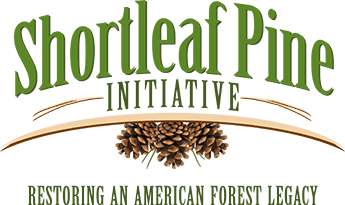|
Shortleaf research, newspaper articles, fact sheets, conference proceedings, literature reviews, and brochures.
Hybridization A Study of the Growth, Yield, and Pest Resistance of Shortleaf X Slash Pine Hybrids
A Study of the Growth, Yield, and Pest Resistance of Shortleaf X Slash Pine Hybrids
Wells, O. O., & Schmidtling, R. C. (1983). A Study of the Growth, Yield, and Pest Resistance of Shortleaf X Slash Pine Hybrids. Southern Forest Experiment Station, Research Note SO-291. Retrieved from https://www.srs.fs.usda.gov/pubs/rn/rn_so291.pdf Stewart, J. F., Tauer, C. G., & Nelson, C. D. (2011). Bidirectional introgression between loblolly pine (Pinus taeda L.) and shortleaf pine (P. echinata Mill.) has increased since the 1950s. Tree Genetics & Genomes, 8(4), 725-735. Retrieved from https://link.springer.com/article/10.1007/s11295-011-0459-2  Direction of pollination affects seed productivity in (shortleaf x loblolly) x lobolly hybrids
Direction of pollination affects seed productivity in (shortleaf x loblolly) x lobolly hybrids
La Farge, T., & Hunt, D. L. (1981). Direction of pollination affects seed productivity in (shortleaf x loblolly) x lobolly hybrids. Southeastern Forest Experiment Station, Research Note SE-294. Retrieved from https://www.srs.fs.usda.gov/pubs/rn/rn_se294.pdf  Frequent fire protects shortleaf pine (Pinus echinata) from introgression by loblolly pine (P. taeda)
Frequent fire protects shortleaf pine (Pinus echinata) from introgression by loblolly pine (P. taeda)
Stewart, J. F., Will, R. E., Robertson, K. M., & Nelson, C. D. (2014). Frequent fire protects shortleaf pine (Pinus echinata) from introgression by loblolly pine (P. taeda). Conservation Genetics, 16(2), 491-495. Retrieved from https://www.srs.fs.usda.gov/pubs/ja/2014/ja_2014_nelson_001.pdf Schmidtling, R., Myszewski, J., & McDaniel, C. (2005). Geographic variation in shortleaf pine (Pinus echinata Mill.)-Cortical monoterpenes. Proceedings: 28th Southern Forest Tree Improvement Conference: June 21-23, 2005. Raleigh, NC: North Carolina State University, Department of Forestry and Environmental Resources, 2005: 161-167. Retrieved from http://www.srs.fs.usda.gov/pubs/25247/  Hybridization in Naturally Regenerated Shortleaf Pine as Affected by the Distance to Nearby Artificially Regenerated Stands of Loblolly Pine
Hybridization in Naturally Regenerated Shortleaf Pine as Affected by the Distance to Nearby Artificially Regenerated Stands of Loblolly Pine
Stewart, J. F., Tauer, C. G., Guldin, J. M., & Nelson, C. D. (2013). Hybridization in Naturally Regenerated Shortleaf Pine as Affected by the Distance to Nearby Artificially Regenerated Stands of Loblolly Pine. Southern Journal of Applied Forestry, 37(2), 102-107. Retrieved from https://www.srs.fs.fed.us/pubs/ja/2013/ja_2013_stewart_001.pdf  Hybridization Leads to Loss of Genetic Integrity in Shortleaf Pine: Unexpected Consequences of Pine Management and Fire Suppression
Hybridization Leads to Loss of Genetic Integrity in Shortleaf Pine: Unexpected Consequences of Pine Management and Fire Suppression
Tauer, C. G., Stewart, J. F., Will, R. E., Lilly, C. J., Guldin, J. M., & Nelson, C. D. (2012). Hybridization Leads to Loss of Genetic Integrity in Shortleaf Pine: Unexpected Consequences of Pine Management and Fire Suppression. Journal of Forestry, 110(4), 216-224. Retrieved from https://www.srs.fs.fed.us/pubs/ja/2012/ja_2012_tauer_001.pdf Stewart, J. F., Liu, Y., Tauer, C. G., & Nelson, C. D. (2010). Microsatellite versus AFLP analyses of pre-management introgression levels in loblolly pine (Pinus taeda L.) and shortleaf pine (P. echinata Mill.). Tree Genetics & Genomes, 6(6), 853-862. Retrieved from https://link.springer.com/article/10.1007/s11295-010-0296-8  Natural hybridization within seed sources of shortleaf pine (Pinus echinata Mill.) and loblolly pine (Pinus taeda L.)
Natural hybridization within seed sources of shortleaf pine (Pinus echinata Mill.) and loblolly pine (Pinus taeda L.)
Xu, S., Tauer, C. G., & Nelson, C. D. (2008b). Natural hybridization within seed sources of shortleaf pine (Pinus echinata Mill.) and loblolly pine (Pinus taeda L.). Tree Genetics & Genomes, 4(4), 849-858. Retrieved from https://www.srs.fs.usda.gov/pubs/ja/ja_xu003.pdf  Recovery from topkill of shortleaf pine × loblolly pine hybrids compared to their parent populations
Recovery from topkill of shortleaf pine × loblolly pine hybrids compared to their parent populations
Will, R. E., Lilly, C. J., Stewart, J., Huff, S., & Tauer, C. G. (2013). Recovery from topkill of shortleaf pine × loblolly pine hybrids compared to their parent populations. Trees, 27(4), 1167-1174. Retrieved from https://link.springer.com/content/pdf/10.1007%2Fs00468-013-0866-0.pdf |

